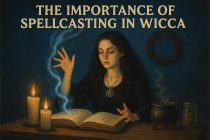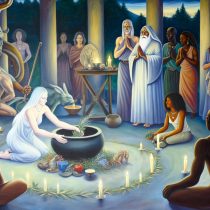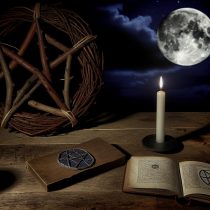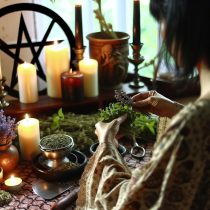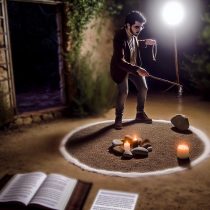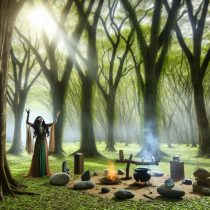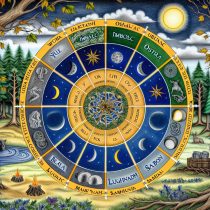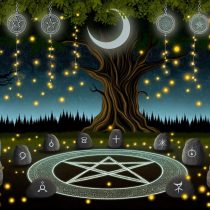The Role of Spellcasting in Wicca
Wicca, a modern pagan religion, is centered around the worship of nature and the deities associated with it, and it strongly emphasizes the practice of magic. Spellcasting is a core practice within Wicca, involving the deliberate direction of energy to manifest desired changes in various aspects of life or the surrounding environment. It is crucial to understand that spellcasting in Wicca is quite distinct from the dramatic and often inaccurate portrayals that permeate popular media. Understanding these distinctions can offer deeper insights into the practices and beliefs of this intriguing spiritual path.
Understanding Spellcasting
Spellcasting within Wicca is not merely about performing rituals; it involves harnessing and directing the natural energies that practitioners believe permeate all aspects of life. This process can take many forms, including the use of candles, herbs, crystals, and chants. The true significance of these rituals lies not only in the actions themselves but in the intent and focus maintained by the practitioner. Such focus is integral to the successful execution of any spell.
Intent and Focus
In Wicca, the intent of a spell is as critical, if not more so, than the physical items or actions involved. Practitioners emphasize the importance of concentrating one’s thoughts and intentions to effectively channel and direct energy. By holding a precise thought or clear purpose, the practitioner is more likely to align the spell with the desired outcome. This alignment is crucial as it reflects the inner intention with the outer action, creating a harmonious balance essential for the spell’s success.
Rituals and Tools
Wiccan spells often incorporate rituals that may differ significantly based on personal practices or those of a coven. Various tools such as an athame (a ceremonial dagger), a wand, or a chalice are used to represent or direct energy in these rituals. However, the tools themselves possess no inherent power. Instead, they serve as conduits to aid in focusing and directing the practitioner’s energy. These items become extensions of the practitioner’s will, facilitating a deeper connection with the energies in play.
Ethical Considerations
A fundamental aspect of spellcasting in Wicca is the adherence to ethical guidelines outlined in the Wiccan Rede, encapsulated in the phrase, “An it harm none, do what ye will.” This principle underscores the responsibility practitioners bear in being mindful of the potential impact their spells may have on themselves and others. Consequently, Wiccan spells are never to be used to manipulate or control others without their consent. This ethical stance ensures that the practice of magic remains aligned with the values of respect and harmony within the larger tapestry of life.
The Importance of Timing
Timing is considered a critical factor in the success of many Wiccan spells. Practitioners may choose to align their spellcasting with the natural cycles, such as specific phases of the moon, times of the day, or seasons of the year believed to amplify the energies required for a spell’s particular intent. By doing so, they seek to synchronize their efforts with the larger rhythms of the universe, thereby enhancing the effectiveness of their spells. This approach reflects a deep respect for the interconnectedness of all things and the belief that nature provides a supportive framework for magical workings.
Further Exploration
For those interested in delving deeper into the practice of spellcasting within Wicca, a wealth of resources is available, ranging from books to online courses led by seasoned practitioners. It is wise to approach these materials with an open yet discerning mind, assessing what resonates personally with one’s beliefs and understanding. Engaging in this exploration can provide both practical insights and a deeper appreciation of the spiritual dimensions underpinning Wiccan practices.
In appreciating the crucial role of spellcasting in Wicca, one must recognize it as a spiritual practice intricately linked to the reverence of nature and the ethical principles guiding its practitioners. The successful fusion of mind and intent, within the boundaries of natural laws, bestows spellcasting with its distinctive significance within the Wiccan tradition.
Reflections on Wiccan Practice
Wicca is about more than just individual practices; it involves a broader philosophy that invites practitioners to connect intimately with the world around them. This connection is often fostered through spellcasting, seen not as a means to an end but a method of cultivating a symbiotic relationship with nature. By participating in the cycles of the earth and adhering to ethical guidelines, Wiccans engage with the art of spellcasting as a means to not only bring about personal change but also to honor the balance and harmony of the natural world.
Integration of Knowledge
The journey into spellcasting within Wicca is one of personal growth and ongoing learning. As practitioners become more attuned to their own energies and the energies of the world around them, they often develop a more profound sense of empathy and understanding. This personal evolution is a testament to the transformative potential of Wiccan practices. Through study, reflection, and practice, individuals deepen their connection to the divine aspects of nature and the universe.
Community and Solitary Practices
Wicca can be practiced both in community with others, known as a coven, or in solitude. Each approach offers unique benefits and challenges. Practicing within a coven can provide support, shared knowledge, and communal energy that can enhance spellcasting efforts. However, solitary practitioners often find deep personal empowerment and fulfillment through the direct personal connection they cultivate with nature and their spiritual practice. Both paths are respected within the Wiccan community, as they both aim to honor the sacred connection between humanity and the natural world.
Continued Personal Development
As practitioners continue on their path in Wicca, they are encouraged to engage in continual reflection and personal development. This ongoing journey is marked by a commitment to understanding and growing from each experience. Spellcasting becomes a tool not just for influencing external circumstances but also for internal transformation. Through this practice, individuals are constantly redefining their relationship with themselves, others, and the wider universe.
By weaving together these various aspects of practice and belief, Wiccans create a rich tapestry of spiritual life that is both deeply personal and interconnected with the broader cosmos. This complex interplay of intent, ethics, timing, and community distinguishes Wicca as a unique and profound spiritual path, where spellcasting serves as both an art and a reflection of the practitioner’s journey toward harmony with the divine forces of nature.

